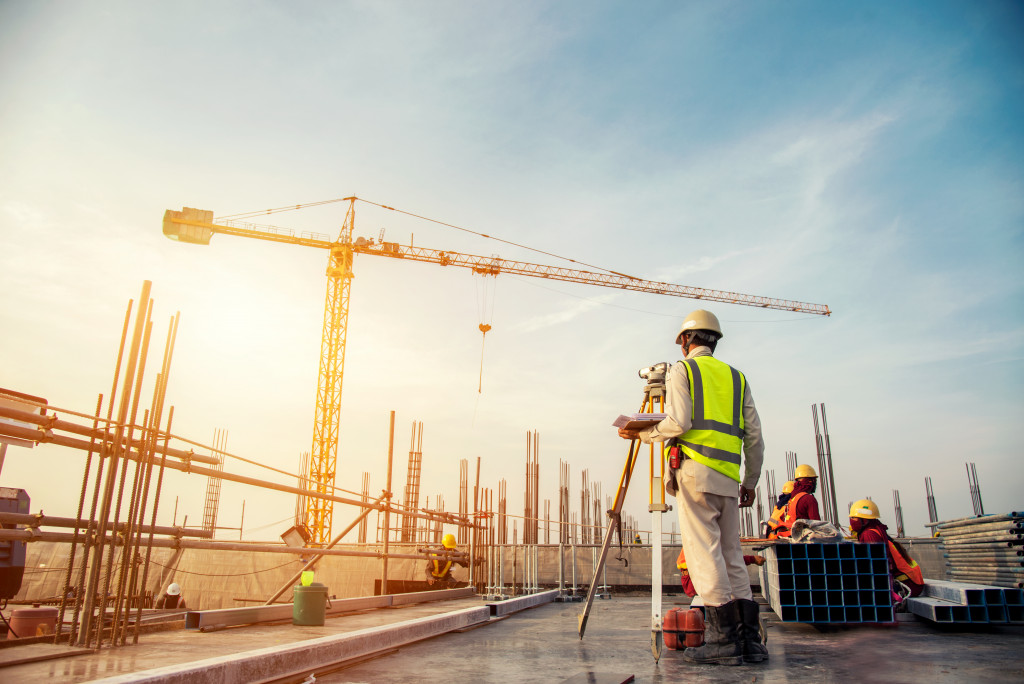- Choosing the right equipment is essential for any business to succeed in a highly-competitive environment.
- Factors such as budgeting, capacity needs, scalability, and maintenance concerns should be considered when selecting equipment.
- Power and capacity are two key elements to look out for when choosing construction equipment.
- Durable and safe products should be sought to ensure personnel safe from potential accidents and injuries.
- Tools such as clevis lifting attachments, chain slings, hydraulic jacks, and forklifts are indispensable for the industry.
Choosing the right equipment for your business is one of the most important decisions you’ll make as an entrepreneur. Depending on what type of business you run, finding the right mix of machinery and tools to efficiently complete tasks will determine whether or not your company succeeds or fails in a highly-competitive environment.
You need to ensure that the products are suited to meet your specific needs and find ways to save on costs while improving overall workflow and productivity levels.
Importance of Selecting the Right Equipment
Selecting the right equipment for a business is essential for a successful and smooth running operation. Quality tools and resources can help to increase productivity, support economic growth, and make operations more efficient.
Investing in quality equipment that fits the specific needs of your business can be tricky, especially when there are numerous options to choose from.
Factors to Consider When Selecting Equipment
The business environment constantly evolves, and success often hinges upon having the right equipment. Selecting the appropriate equipment for your business can take time and effort. When choosing the right equipment, you’ll need to consider multiple factors, including budgeting and capital outlay, efficiency needs, scalability, maintenance concerns, and organizational growth planning.
Furthermore, make sure that you are up to date with current industry trends; to ensure that whatever you decide to purchase will meet your industry standard regulations.
Power and Capacity
Two essential factors when selecting the right equipment for your construction business are power and capacity. Power refers to the amount of output energy a machine delivers, measured in horsepower, kilowatts, and torque. Capacity indicates how much a piece of equipment can do, its size, and additional features or attachments such as drills, shears, or breakers.
Purchasing construction equipment with the most appropriate power and capacity for your business’s needs is vital to ensure optimal productivity and cost efficiency.
Durability and Safety Features
When selecting equipment for a construction business, durability and safety features must be considered. The equipment should have good strength and rigidity and withstand harsh conditions. They should also feature a variety of safety measures, such as padding, harnesses, and safety locks, to protect workers from preventable injuries.

Essential Construction Equipment
Construction equipment comes in all shapes, sizes, and functions. It can range from standard tools such as hammers and saws to large machineries like bulldozers and cranes. All of this equipment is essential for a successful construction project. Depending on the scale of the project, the necessary tools can vary.
Smaller projects may require smaller equipment, while larger ones may necessitate an entire armada being used simultaneously. Keeping all the relevant tools for different jobs and stages of the building is important for any contractor working in this industry.
Clevis Lifting Attachments
Clevis lifting attachments are an essential item of construction equipment, mainly when dealing with heavy loads. These clevis lifting devices are affixed to a crane or other lifting equipment. The clevis connection allows them to be quickly and easily hooked onto steel rigging for simple load suspension.
A clevis can safely support up to 24 tonnes, making them the reliable go-to choice for many heavy-duty construction projects as well as manual and powered hoists for lifting hefty objects, offering operators more flexibility to move items around the working area with precision.
Chain Slings
Chain slings are an essential tool for the construction industry, used to securely and safely lift heavy loads. They are made of alloy steel and available in various industrial grades, with working load limits ranging from a few hundred pounds to thousands.
A chain sling must be carefully assembled and inspected regularly, as even a small amount of damage can put people at risk or reduce capacity.
Hydraulic Jacks
Hydraulic jacks are invaluable tools for construction, able to lift and support heavy loads with extreme precision. They are great for movements in tight spaces, as their compact design allows them to fit into confined areas.
Many hydraulic jacks feature built-in overload protection and an adjustable base for most professional jobs. This type of equipment is widely used when lifting posts and beams or fine-tuning details.
Forklifts
Forklifts are powerful machines that can lift and move heavy loads around construction sites. They come in various sizes and weight capacities and can be equipped with different lifting attachments to accommodate other loads.
Cranes
Cranes are essential tools for lifting and moving heavy objects in construction. They can hoist loads to great heights or move them horizontally across a site. Cranes come in many types and sizes, from small mobile cranes to massive tower cranes used on high-rise construction projects.

Choosing the right equipment for your construction business can be a long and complex process. When selecting the right tools, it is essential to consider all factors, like power and capacity, durability, and safety features. Essential construction tools that must be taken into account include clevis lifting attachments, chain slings, hydraulic jacks, forklifts, and cranes. These essential pieces of equipment have unique properties to suit different tasks and requirements.
With proper selection and utilization, owners can take advantage of improved efficiency in their projects as well as increased operational safety. This ensures that construction equipment remains an integral part of construction businesses worldwide.





